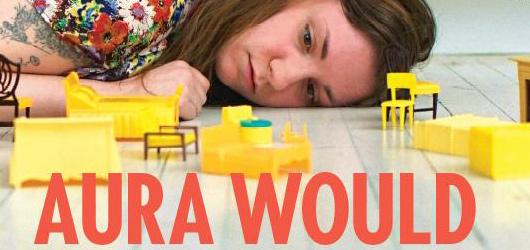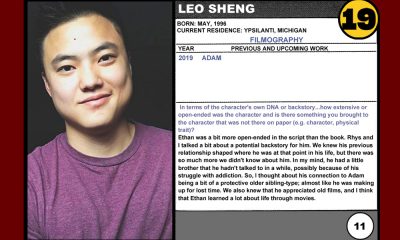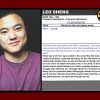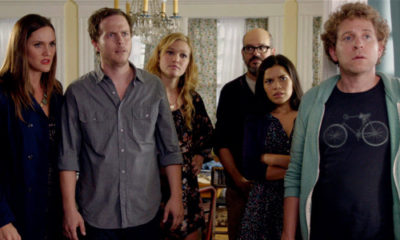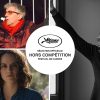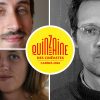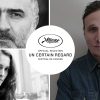Retro IONCINEMA.com
Art of the Movie Poster #4: Tiny Furniture
Before the movie went to South by Southwest, I met with Lena and Alicia Van Couvering, one of Tiny Furniture’s producers, to discuss how we would use promotional materials to get festival-goers excited about the movie. Alicia and I came up with a “guerilla flyering” campaign. We made several 8.5 x 11 flyers with big, bold quotes from the film like “My heart is so broken and my vagina hurts so much”
Lena Dunham’s Tiny Furniture, is the kind of film that makes you remember all the shitty parts of your life with a sort of wistful, romantic nostalgia. It doesn’t shy away from the pessimistic and the awkward, but at the same time, it draws you in to it’s dark corners and let’s you enjoy being there. It’s about the wallowing days after college graduation where your hopes and dreams crash against the callous indifference of the world. As Lena puts it in our interview with her, the “disappointments of life as you imagined it versus life as it actually is.”
Teddy Blanks, who also did the music (which you can download for free here) and credits for the film, brings this juxtaposition to life in the movie’s one sheet. Using bold type over the prostrate and depressed main character, Teddy captures both the universal theme of despair with the feeling of being out of place in a world that was once familiar.
I had a chance to discuss Teddy’s collaborative process with Dunham, first delving into his experience of working on the music for the film and then learning about the design of this poster.

Brad Sorensen: Before we get to the poster design work, could you detail the working process with Lena as the film’s composer.
Teddy Blanks: Before shooting began, Lena sent me an early draft of the screenplay so I knew the story and could get an idea of the general tone. My first step was to limit myself to just a few instruments and samples — that way I knew everything I wrote for the movie would have a specific sound. Because Lance Edmands, who edited Tiny Furniture, was assembling scenes daily during the shoot, I started working on music from the start of shooting. I would send him 4 or 5 tracks each week that he could use to temporarily drop in over scenes, and he and Lena would come back to me and say things like, “Can we have a version of track three, but with no percussion,” or “We need two more pieces with the general feeling of track five, except way sadder sounding,” and I would oblige.
Near the end of the process when we had a fairly solid idea of what music should go where, I sat and went over the entire edit two or three times with Lena and Lance, noting exactly how long each piece needed to be, and if any changes needed to be made in any particular section. When I had the final mixes, Lance and I placed them in the film one by one together.
Sorensen: You also mentioned your studio (CHIPS) did the opening and closing credits. Can you talk about the development process on that?
Blanks: My original idea, which we actually shot, was a minute-long overhead shot of Lena’s character Aura packing a box before heading to college. After she put each item in (e.g. a picture of her and her ex-boyfriend, a John Cassavetes biography, a huge ziplock bag of hamster food), her hand would move away to reveal the next credit. Ultimately, we had to cut the whole sequence after a test screening where everyone thought the hamster food was a bag of weed.
After that got nixed, I went around Lena’s apartment and took close-up shots of some of the textures and furniture that would appear later in the film; her bedspread, the white cabinets, the treadmill, etc, and then simply superimposed the titles on these shots. (Though actually, when Jody Lee Lipes, the film’s excellent cinematographer, saw my slightly shaky, blurred-out footage, he insisted on re-shooting the textures himself.) Lance intercut those title cards with a newly-shot sequence of Aura coming home from the airport, and I finished the design off by animating vintage clip art — tiny chairs and tables floating in and out of the frame.
The end titles are just an expanded version of the same idea. Simple white titles on dark color fields — with tiny furniture floating up, down, and sideways in the background.
Sorensen: Given that Lena was the writer, director and star, I guess it makes sense that one person would do the music, the credits and the poster design. Did the music lead to the poster design gig? How did all of this come together?
Blanks: Lena and I have been friends since college, and I’ve done the credits and promotional materials for almost everything she’s put out. Before she started making movies, she ran an online poetry journal, and I designed that too. It’s really a treat to work with her — unlike a lot of filmmakers for whom titles and posters are an afterthought, Lena has always been smart about having good design be a part of her process from day one.
I wrote the music for her first feature “Creative Nonfiction,” and my band the Gaskets provided songs for her web series “Tight Shots.” Lena once directed a hilarious music video for us that featured underwear-clad girls dancing and wearing cut-out masks of my face, sort of like a lo-fi version of that Aphex Twin ‘Windowlicker’ video. So the short answer is, I’ve been working on Lena’s projects for a long time, and it seemed natural she would bring me on for this one as well.
Sorensen: There’s almost a 1960’s meets IKEA catalogue typography feel going on here. I love the contrast between the size of the copy with the title (‘tiny’) and the miniature toys Lena is playing with. Could you discuss how the font came to “box out” the main character.
Blanks: Thanks! From the start I knew that the title treatment itself had to be big, bold, all-caps — almost a repudiation of the initial feeling you would get from hearing the title alone.
Before the movie went to South by Southwest, I met with Lena and Alicia Van Couvering, one of Tiny Furniture’s producers, to discuss how we would use promotional materials to get festival-goers excited about the movie. Alicia and I came up with a “guerilla flyering” campaign. We made several 8.5 x 11 flyers with big, bold quotes from the film like “My heart is so broken and my vagina hurts so much” and then “Tiny Furniture” in very small type at the bottom, and posted them all over Austin.

When I was working on the festival poster, I was given this photo of Lena looking very sad and lying next to some paper furniture. It wasn’t a screenshot of the movie but a still taken during production, and the photograph was very dark and not high resolution. The shelves behind her were blurred out and full of lots of muddy colors — it was tough to put any type on the image at all with those in the background. After some intense color-correcting, I was trying to work in the tagline in some way that didn’t look too awkward and just generally having a hard time with that as well.
Then Adam Squires, my design partner at CHIPS, walked by my desk and said, “Why don’t you just make the tagline giant like the type in the flyers?” So I did, and to make space for the big type I shoved Lena’s head to the top of the frame. Adam’s over-the-shoulder comment solved my messy-shelves problem and my tagline-placement problem in one swoop.
Sorensen: Did other posters/artwork influence you or serve as inspiration on your design?
Blanks: I wish I could give a better answer here, and I’m sure that there are graphic design influences that seeped through subconsciously. But what is unique about the poster really came from those quick-and-easy flyers we put out for SXSW — and the inspiration for those was Lena’s brilliant, quippy writing.
Sorensen: If I skimmed the picture correctly, you picked out pastel colors for the typography from items in the picture.
Blanks: That’s true. The salmon color of the tagline comes from the lid of a box on a shelf behind Lena, and the teal color in the title comes from what looks like a tiny toilet-seat cover.
Sorensen: The image represents the character – how did you settle on this particular image? Could you discuss the used tagline?
Blanks: In the first image I was given, Lena’s eyes were rolled in the back of her head, and the photo was so dark and so blue, it looked like she was dead. I asked for another photo, and was sent this one where she’s looking a little more toward the furniture itself, but still very sad. I’m not sure who came up with the tagline, but Alicia gave it to me to use on the poster, and until I set it in 300-pt. type, I didn’t realize how great it was juxtaposed against that image. You see this very sad-looking girl, and maybe think the whole thing is just really depressing, but then the tagline clues you in to the movie’s self-deprecating comedy. Sure, she’s having a hard time, but more important than that is she wants you to KNOW she’s having a hard time.
Tiny Furniture is currently playing in NYC and Los Angeles theaters, with further expansion in the coming weeks.



